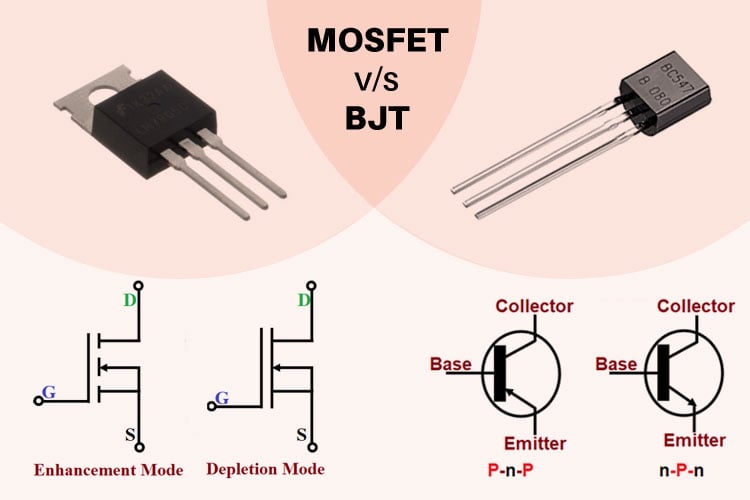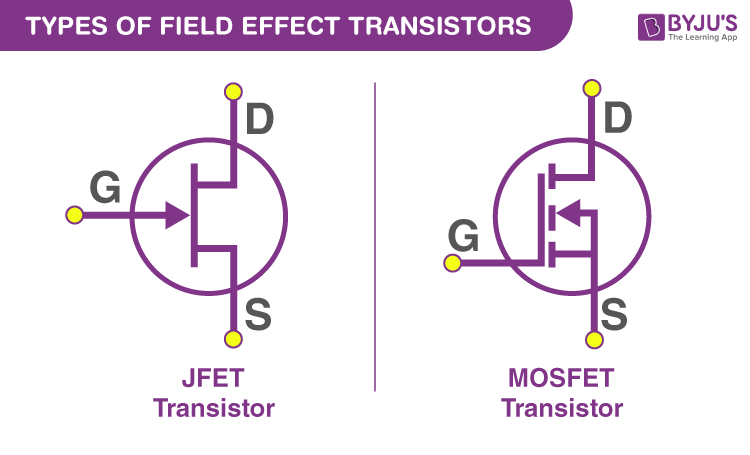This is their symbol for an N Channel MOSFET. A nasty piece of work, alas. A type of semiconductor field effect transistor used in integrated circuit technology that consumes very little power and can be highly miniaturized. m (etal)-o (xide)-s (emiconductor) f (ield)-e (ffect) t (ransistor). What does MOSFET stand for? List of 42 MOSFET definitions. Top MOSFET abbreviation meanings updated January 2021. A power MOSFET is a specific type of metal–oxide–semiconductor field-effect transistor (MOSFET) designed to handle significant power levels. Compared to the other power semiconductor devices, such as an insulated-gate bipolar transistor (IGBT) or a thyristor, its main advantages are high switching speed and good efficiency at low voltages.
In this project, we will go over how to connect an N-Channel MOSFET to a circuit for it to function as an electronic switch.
The type of N-Channel MOSFET we will use is the enhancement-type MOSFET, the most commonly used type of MOSFET.
MOSFETs, like BJTs, can function as electronic switches. Although unlike BJTs, MOSFETs are turned on, not by current, but by voltage.
MOSFETs are voltage-controlled devices. This means that a voltage applied to the gate controls whether the transistor switches on or off. When an N-channel (enhancement-type) MOSFET has no voltage at its gate, it is OFF and no current conducts across from drain to source; thus, the load connected to the MOSFET will not turn on.When there is sufficient voltage at the gate (about 3V), the MOSFET is on and current conducts across from the drain to the source to power on the load.
Know the distinction between a voltage-controlled device and a current-controlled device. MOSFETs are voltage-controlled. This means that only voltage hasto be applied to the gate for it turn on. It does not need current. Therefore, when we are wiring up the N-channel MOSFET, we simply connect the voltage source to the gate terminal. No resistor is necessary, as would be the case for a bipolar junction transistor, which is current-controlled. We simply connect a positive voltage to the gate terminal without an external resistor. Therefore, with a MOSFET, biasing the circuit is actually a little simpler than with BJTs.
Components Needed
- 2N7000 MOSFET
- DC Motor or Buzzer
- 6 'AA' batteries or Dual DC Power Supply
In our circuit, we are going to use a very popular N-channel MOSFET, the 2N7000.
The 2N7000 is an enhancement-type MOSFET, meaning as more voltage is fed to the gate, the current from the drain to the source increases. This is in contrast to depletion-type MOSFETs, in which increasing voltage to the base blocks the flow of current from the drain to the source.
Know that an N-Channel MOSFET, like all MOSFETS, have 3 pins, the drain, the gate, and the source.
If you look at the back view of the transistor, the leftmost pin will be the drain, the middle pin is the gate, and the rightmost pin is the source.
The gate terminal is where we connect at about 3V to power on the transistor (to make it turn on).
The drain terminal is where we connect our output device that we want to power. And when connecting our load, if the device is polarity-sensitive, such as LEDs and buzzers are, the anode terminal must be connected to the positive voltage, while the cathode end connects to the drain terminal. Or else, it won't work, because current in an N-channel MOSFET flows from drain to source. If we hooked up an LED, reverse biased, so that its anode was connected to the drain terminal and its cathode was connected to the positive voltage source, it would not work.
The last terminal, the source, simply connects to ground. Since current flows from drain to source, the source must be grounded to create a return path.
The 2N7000 datasheet is can be be viewed here: 2N7000 MOSFET datasheet.
N-Channel MOSFET Circuit Schematic
The schematic for the N-Channel MOSFET circuit we will build is shown below.
So, this is the setup for pretty much any N-Channel MOSFET Circuit.
Positive voltage is fed into the gate terminal. For an 2N7000 MOSFET, 3V at the gate is more than sufficient to switch the MOSFET on so that it conductsacross from the drain to the source. Now that we have hooked up sufficient voltage to the gate to turn on the transistor, then we must supply voltage to our load on the drain terminal of the transistor. Remember, one voltage is to turn on the transistor and the other voltage is to power the load once the transistor has been turned on.
The amount of voltage that needs to be connected to the load depends entirely on how much voltage the load needs to be powered on. If you are using a 6V DC motor or buzzer, then you connect 6V to the drain terminal. If you are powering a 12V motor or buzzer, then you connect 12V.
Since the buzzer we are using in this circuit requires 6V, 6V is connected to the drain terminal.
And this is how an N-Channel MOSFET is set up and works.
To see this how this circuit works in real life, see the video below.
Mosfet Meaning In Electronics
Related Resources
How to Connect a Transistor as a Switch in a Circuit
How to Connect a (NPN) Transistor in a Circuit
Types of Transistors
Bipolar Junction Transistors (BJTs)
Junction Field Effect Transistors (JFETs)
Metal Oxide Semiconductor Field Effect Transistors (MOSFETs)
Unijunction Transistors (UJTs)
What is Transistor Biasing?
How to Test a Transistor
A metal-oxide-semiconductor field-effect transistor (MOSFET) is a voltage-controlled electronic component invented by a South Korean Engineer Dawon Kahng, and his colleague Martin M. Atalla in 1959 whilst working at Bell Labs. It was the first insulated gate FET, consisting of a metal gate (M), oxide insulation (O), and silicone semiconductor material (S). The three connections of a field effect transistor are source, drain, and gate. In this device, a voltage at the gate junction produces an electric field, which controls the current flowing between the source and drain junctions. This MOS technology was later utilised to develop integrated circuits (IC) which Kahng foresaw.
Voltage Controlled Device
The differences in the operation between a MOSFET and a bipolar junction transistor (BJT) are huge, but the main ones are that a BJT is a current controlled device because current at the base junction controls the flow of current between the collector and emitter junctions. However, a MOSFET is a voltage-controlled device, where a voltage at the gate junction creates an electric field, which controls the flow of current between the source and drain junctions.
Unipolar
Another huge difference is that in a BJT, the electrons and holes are both responsible for carrying the current between the collector-emitter junctions, hence its name is 'bipolar'.

However, a MOSFET is a 'unipolar' device because only one charge carrier, either electrons, or holes carry the charge. In an n-channel MOSFET the majority carriers are electrons, however in p-channel MOSFET, the majority carriers are holes.
Symbol
IEEE defines the electrical symbol for use in circuit diagrams; however, there are many variations to the FET, JFET, and MOSFET symbols. As technology improves, manufacturers often make their own symbols to represent the component better. The American standard is of course far simpler and easier to remember.
A schematic showing the symmetrical complimentary output stage of an amplifier is easier to read with mirrored transistor symbols. Consequently, they mirror the p-channel symbol along the horizontal axis, and as a result, the source terminal ends up at the top.
If there were no labelling on the symbol, then it is very easy to identify the source terminal, because the gate junction is closer to it.
Arrow
For n-channel, the arrow points inward, however for p-channel the arrow points outward, and there is a very good reason for the meaning of this.
In p-channel MOSFET, conduction occurs through holes, which are the majority carriers for that device. Holes are positive and they attract to the negative side, hence the arrow indicates movement from drain to source.
In n-channel MOSFET, conduction occurs through electrons, which are the majority carriers for that device. They emerge from the source terminal and are attracted to drain which is positive; hence, the arrow indicates movement from source to drain.
Usually a circuit symbol contains a substrate terminal, however in practice it is not utilised. Instead, it connects internally to the source junction, thereby minimising the number of terminals to three.
Depletion Types
N-Channel Depletion
P-Channel Depletion
The depletion MOSFET, or d-MOSFET, is a device, which usually remains in a conducting mode unless a voltage at the gate junction is applied. The voltage at the gate has the effect of switching the device OFF because the electric field produced by the gate voltage reduces the majority charge carriers.
Enhancement Types
N-Channel Enhancement
P-Channel Enhancement

An enhancement MOSFET or e-MOSFET is a device, which remains in a non-conducting state unless a voltage at the gate is present. A voltage at the gate has the effect of switching ON the device, because the electric field produced by the gate voltage increases the charge carriers.
Input Impedance
A MOSFET is a common term for insulated gate field-effect transistor (IGFET). Since a layer of oxide insulates the gate junction, a MOSFET usually has very high input impedance in the order of a few mega ohms. This makes it a very useful component for the input stage of an audio amplifier, where impedance matching issues usually occur.
Temperature Sensitive
MOSFETS are also very hardy transistors because as their temperature increases, the resistance of the drain junction also increases thus choking the current flow. Therefore, they are ideal for use in the power output stage of an amplifier.
IC Application
The reason why integrated circuits (IC) utilise MOSFETS is that they occupy a very small footprint, and are much simpler to fabricate using lithographic technologies.
For IC construction n-channel, MOS is highly favoured because it is 2.5 times faster than p-channel MOS. This is because n-channel conduction occurs through electrons, as opposed to p-channel, which occurs through holes.

This Article Continues...
FET SymbolJFET Symbol
MOSFET Symbol
Mosfet Meaning In Malayalam
Mosfet Symbols
GCSE Electronics Circuit SymbolsMosfet Meaning Of Names
